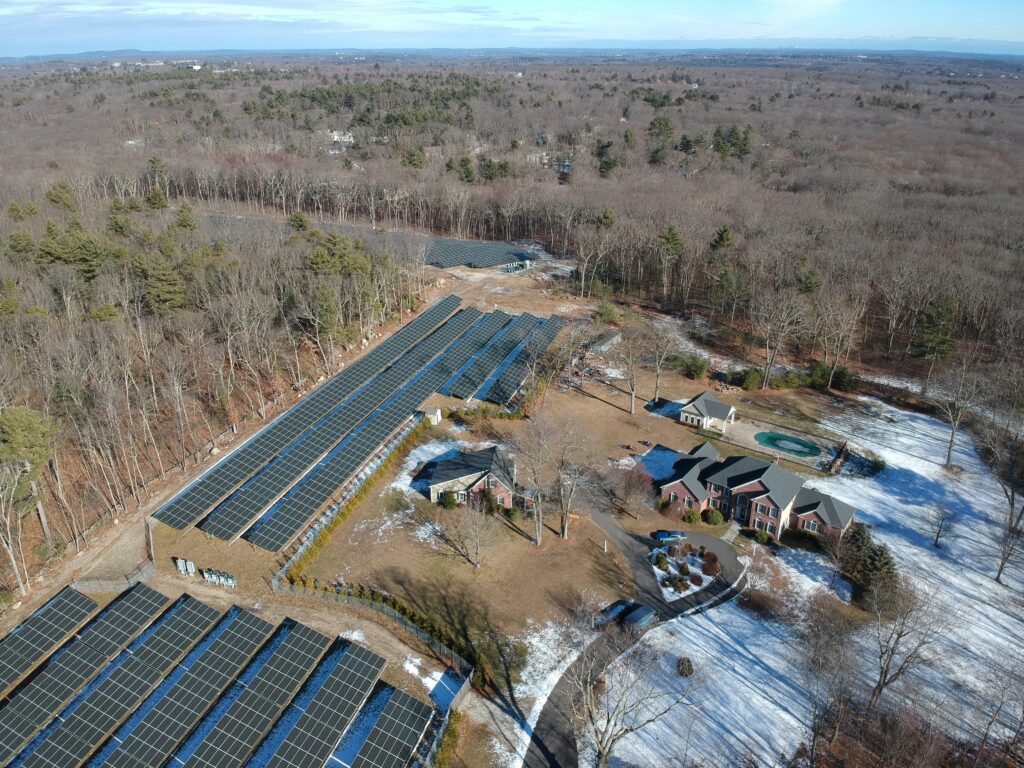The Zoning Advisory Committee on Monday made some final tweaks to its proposed tree-cutting bylaw, which is primarily designed to curtail large commercial ground-mounted solar arrays, and voted to send it to the Planning Board.
The vote was 7-1, with Ron Foisy the lone dissenter. John Coutinho was not present.
ZAC’s strategy is to limit tree clearing on a lot to 20 percent of the basal area in residential and agricultural zoning districts, and 70 percent in business and industrial districts. Basal area is defined in the bylaw as: “The measurement of the cross-sectional area of tree trunks at 4 1/2 feet above the ground and inclusive of the bark. … The total basal area of a subject site shall be the aggregate basal area of all trees 3 inches or greater [in diameter at 4 1/2 feet above the ground] within the subject site.”
Dead or diseased trees would not count as part of the basal area.
Principal planner John Gelcich had suggested using basal area at the last ZAC meeting to better address the issue.
“I think this really gets at the trees that we’re trying to protect with this bylaw and not the land itself,” he said Monday, noting that he selected the 3-inch measurement because it is used in the scenic road bylaw.
Added Gelcich: “I think it allows for some flexibility on the developer’s part to either clear a section of the wood lot for trees or selectively choose which trees to clear in order to meet their needs. So I think it may work out — hopefully. In my head, theoretically it works out the best.”
ZAC chair Mary Larson-Marlowe supported the idea that larger trees would carry more weight.
“This basal area formula takes into account the larger trees are more contribution, more valuable, toward the basal area of square foot per acre,” she said. “So, maintaining the larger trees is going to be automatically beneficial to whomever wants to develop the land. That’s going to be automatically beneficial in this application process, maintaining larger trees. So it is definitely getting where we want it to go, in terms of maintaining the larger trees as much as possible — as long as they’re healthy.”
ZAC had tried a number of specific approaches to addressing solar developments in the past few months but switched gears and looked for a more general approach after town counsel advised that a bylaw that specifically targeted solar would be difficult to defend in court, due to Massachusetts laws that encourage and protect solar.
ZAC member Ted Barker-Hook praised the plan for addressing the committee’s goals to limit solar and protect trees while not getting in the way of other developments.
“What I like about this is we are looking to protect trees from large-scale clearing regardless of the reason,” he said. “But our particular frustration has been with solar farms. It seems to me that the basal area does what we want with limiting solar development because it would be very difficult for a solar developer to leave the big trees, right? Those are the trees that are most problematic. Whereas some of the other developments we’ve seen, which we think have been done more responsibly, they have much greater flexibility in how they do things and are saving the most valuable trees. … I think this works really nicely with our solar development concerns.”
ZAC decided to leave it up to the Planning Board to determine if the proposal would be better as a zoning bylaw or general bylaw.
The Planning Board, which meets next Monday, has reserved a spot on the May 3 Town Meeting warrant for the proposed tree-cutting bylaw.















0 Comments